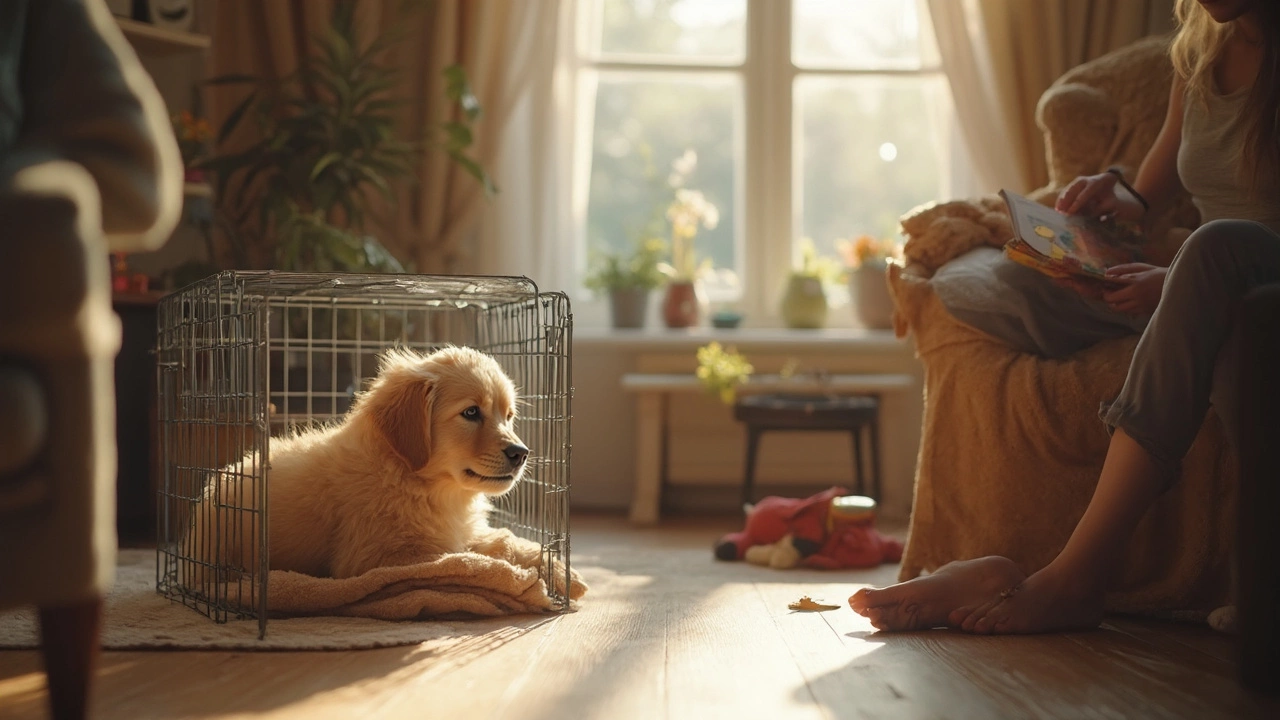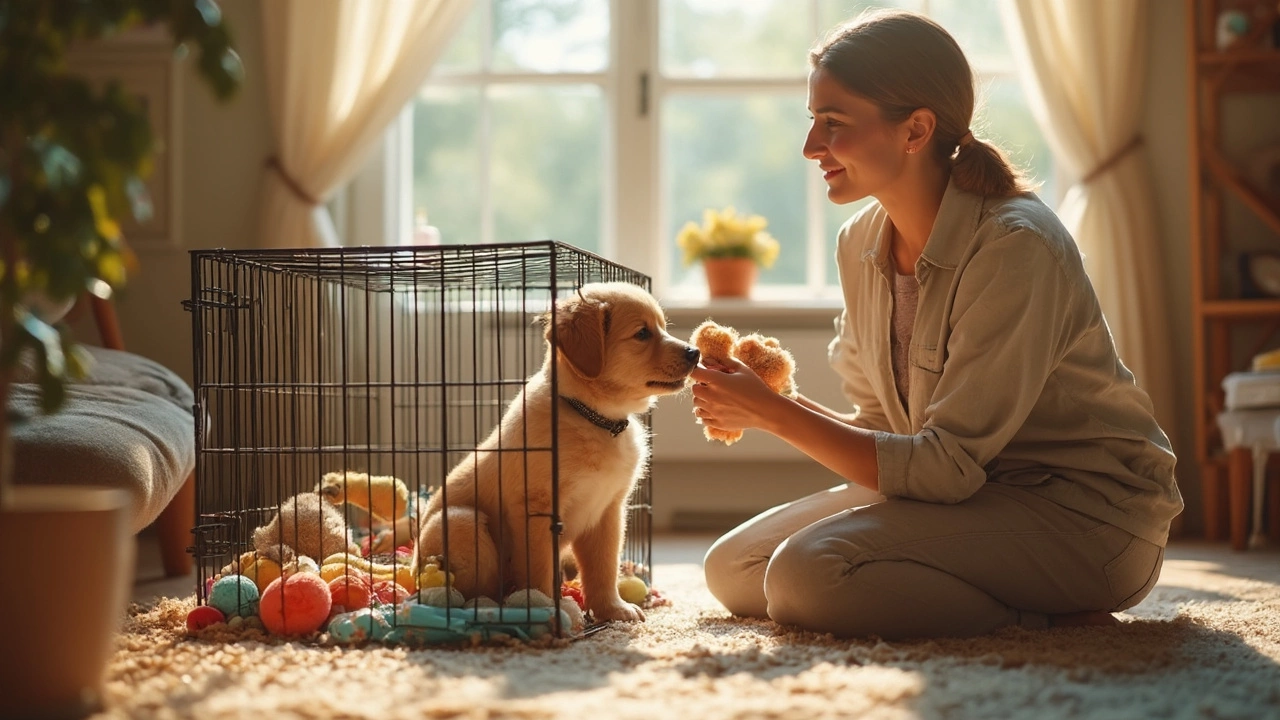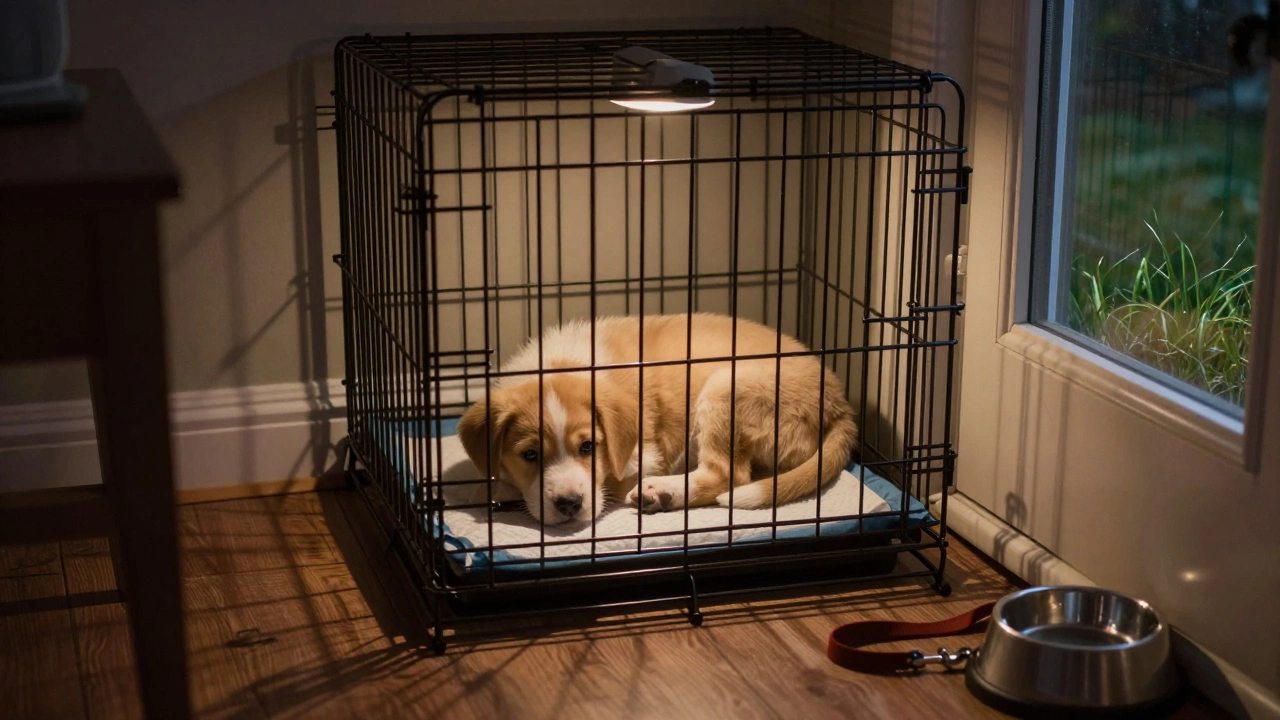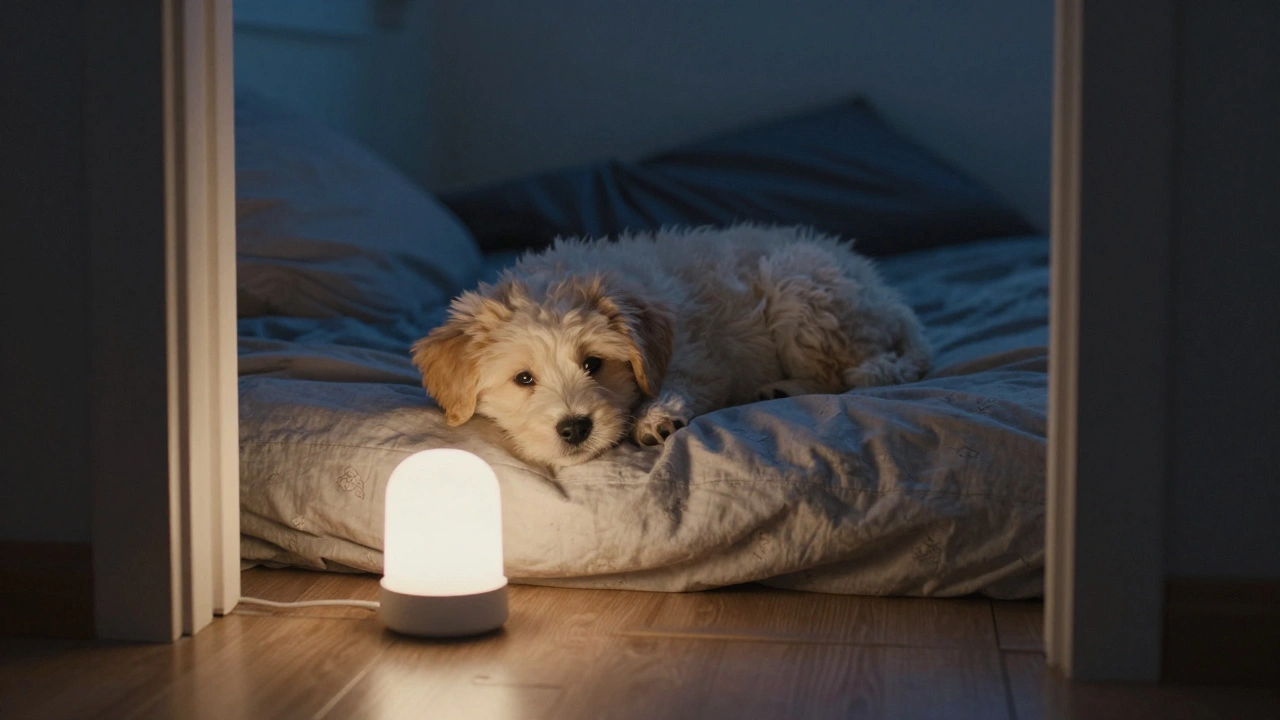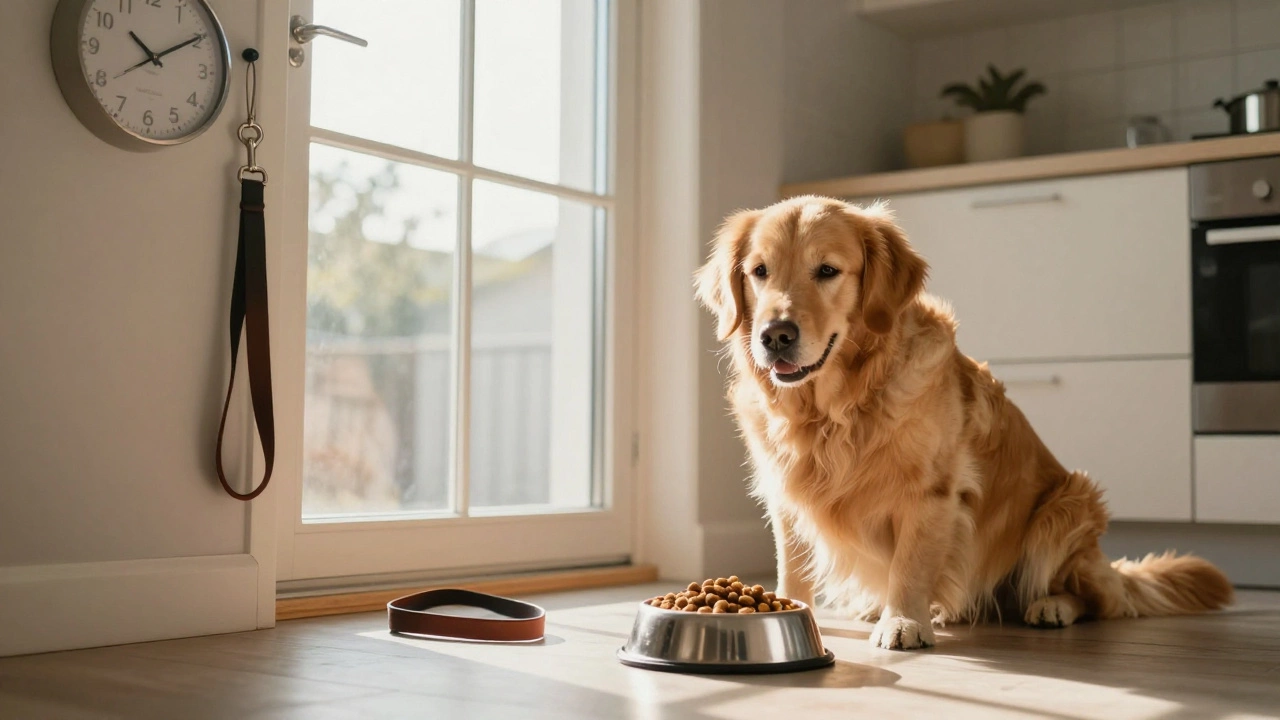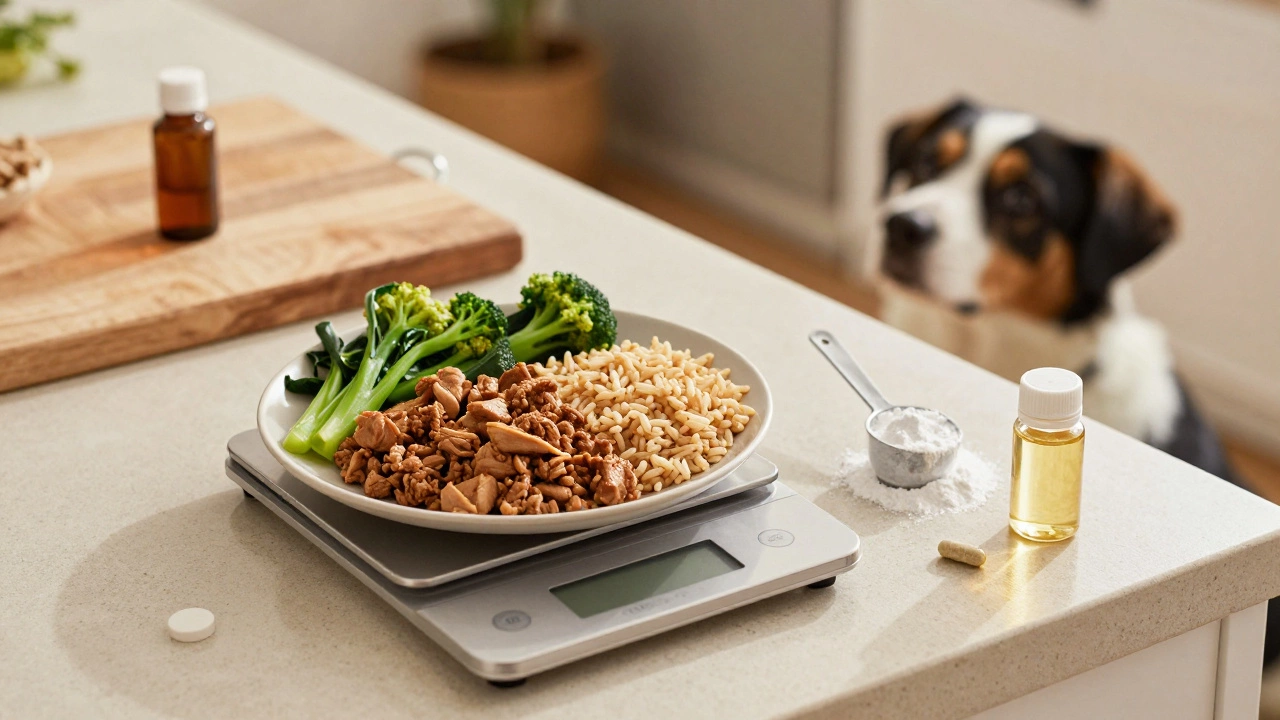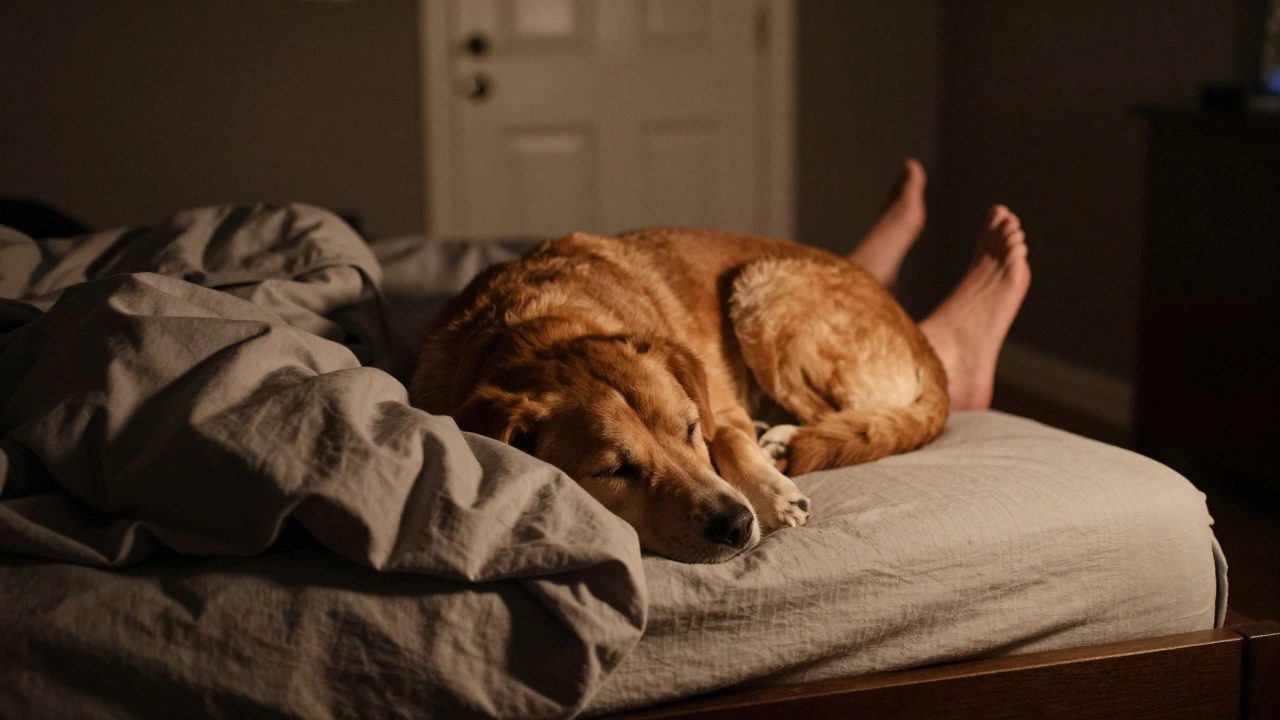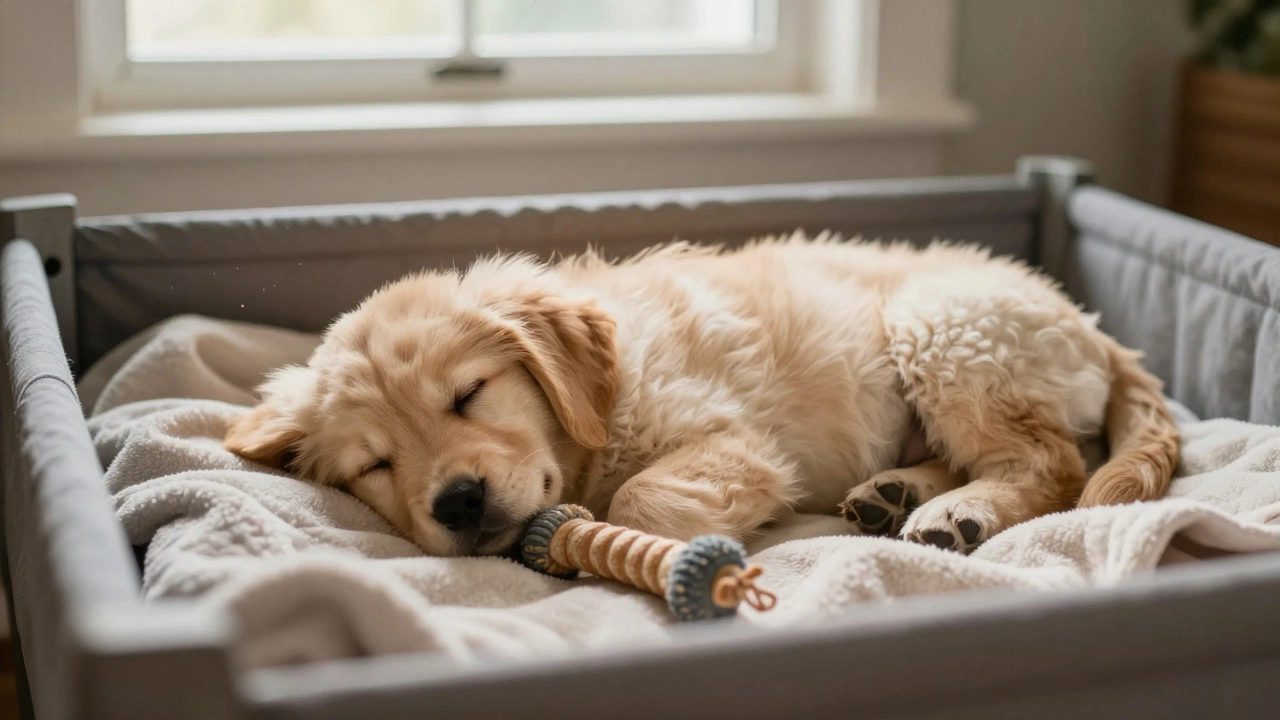So you’ve got a crate, a sleepy puppy, and one big question: do you shut the door or leave it open while they're snoozing? You’re not alone—I ran into this debate the first week Arlo moved in. Every Google search and dog forum has a different answer. What actually works comes down to a mix of safety, comfort, and what makes your puppy feel at ease.
Look at what’s going on in your house. Got kids running around, a nosy cat (got one here named Thistle, trust me), or lots of stuff your puppy shouldn’t chew? Shutting the door keeps your pup safe and out of trouble. Most trainers say that crates should be a cozy den, not a puppy prison. For really young pups still learning about house rules, having the door closed just makes life simpler for everyone—including your shoes.
- Why Puppies Nap in Crates
- The Case for Shutting the Door
- When to Leave the Door Open
- Safety Considerations
- Tips to Help Your Puppy Love the Crate
- What I Do With My Own Dogs
Why Puppies Nap in Crates
Crates aren’t just for nighttime. Most puppies actually nap better inside a crate for a simple reason—they like having a sturdy little spot that feels like a den. If you think about it, dogs in the wild sleep in protected hideaways. It’s just built-in dog logic. Modern crates tap into that same comfort zone feeling.
Giving your puppy a crate for napping is way more than just crowd control. It sets up a routine and teaches them where it’s safe to chill out. Vets and trainers (the good ones) say that puppies who nap in crates are less likely to develop separation anxiety or destructive habits. The crate blocks out distractions, too—so your pup isn’t jumping up every five minutes at the sound of a fridge opening.
- Helps house training: Puppies avoid going potty where they sleep, so crates help keep accidents off your carpet.
- Reduces stress: Having a predictable nap spot calms those little nerves, especially after a busy play session.
- Safer for everyone: You don’t have to worry about your shoes or electric cords turning into teething toys.
A study from the American Veterinary Medical Association showed that crate-trained puppies had 30% fewer accidents inside and were less likely to eat random stuff off the floor. That’s a win in my book.
| Benefit | How It Helps |
|---|---|
| Routine | Teaches predictable sleep and wake times |
| Security | Makes puppy feel protected |
| Safety | Keeps puppy away from harm during unsupervised naps |
| Strong puppy crate training | Leads to faster learning and fewer bad habits |
Bottom line: if you give your pup a crate for napping, you’re basically making life easier for everyone—especially yourself. And if they're comfy and safe, you’ll probably hear fewer complaints (unless you have a stubborn cat who wants to claim the crate for herself).
The Case for Shutting the Door
Shutting the crate door during your puppy's nap has some real perks, especially if you want to use crate training as part of your overall puppy care system. The big idea here is structure—it helps your dog learn where "their spot" is, and that this is a safe place to hang out, wind down, and nap without interruptions.
When the crate door is closed, it adds a sense of stability for your puppy. Young pups, in particular, can get themselves in trouble fast. They’re curious and often get up before you notice, searching for shoes, wires, crumbs—basically, anything they shouldn’t eat or chew. Keeping the door closed blocks those midnight (or midday) misadventures.
"Crate training not only provides a safe environment for puppies, but it also gives pet parents peace of mind. Puppies should always be crated with the door closed when unsupervised, especially early on."
– American Kennel Club (AKC)
If you’re not in the room 100% of the time, or even if you need to hop in the shower, closing the crate door while your puppy naps means you won’t come back to find toilet paper everywhere or the cat food bowl licked clean. This is a huge win for anyone juggling home life and puppy energy.
Let’s look at what closing the crate door can help prevent. Here’s a quick rundown of puppy mischief (and how common it is):
| Problem | % of Puppy Owners Affected* |
|---|---|
| Chewing dangerous items | 67% |
| Accidents in the house | 54% |
| Eating non-food objects | 42% |
| Bothering other pets | 35% |
*Based on a 2023 survey by PetMD.
Another upside: Most puppies need to learn that resting alone is normal and safe. If you use the crate regularly with the door closed, your puppy gets more comfortable chilling by themselves. This can help reduce barking, whining, and separation anxiety. Want to skip the drama when you have to leave the house? Regular closed-door crate naps actually help.
Don’t forget potty training. Puppies usually don’t want to mess up their own sleeping area, and a closed crate helps reinforce this. In the early stages (under 6 months), an open door pretty much guarantees accidents. Closing the door keeps the puppy crate training process on track and saves your floors.
Bottom line: For a lot of puppies, closing the crate door during naps sets up good habits and keeps everyone’s stress level way down. If it’s still early days or your puppy likes to explore anything and everything, you’ll probably want that door closed.
When to Leave the Door Open
Leaving the crate door open actually has its perks, especially once your pup gets used to their new home. If your puppy is already potty trained and you’re confident they won’t chew up shoes or get into trouble, letting the door stay open gives them a sense of freedom. It tells them the crate is their chill spot, not a place they get locked up.
Puppies start seeing the crate as their own little den when the pressure’s off. If your house is puppy-proofed and you can supervise, feel free to let them come and go. This helps dogs build trust and confidence, which goes a long way for their future behavior.
- Only leave the door open if your puppy is past the stage of random accidents.
- If your schedule allows you to watch your puppy, you’re good to go.
- Open doors encourage puppies to nap in the crate out of choice, not because they were forced.
- Some puppies nap longer when they know they’re not locked in.
Check this out: according to a 2023 survey published by the American Pet Products Association, 64% of dog owners whose puppies had crate access always left the door open during daytime naps once their pups were over five months old.
| Age of Puppy | % Owners Leaving Crate Door Open |
|---|---|
| Under 3 months | 18% |
| 3-5 months | 37% |
| Over 5 months | 64% |
Just remember, being able to leave the crate door open doesn’t happen overnight. It’s like giving a teenager trust with a car—you do it when you know they’re ready. The golden rule for puppy crate training is always safety first. If there’s even a slim chance your pup could find trouble, err on the side of caution and close the door.
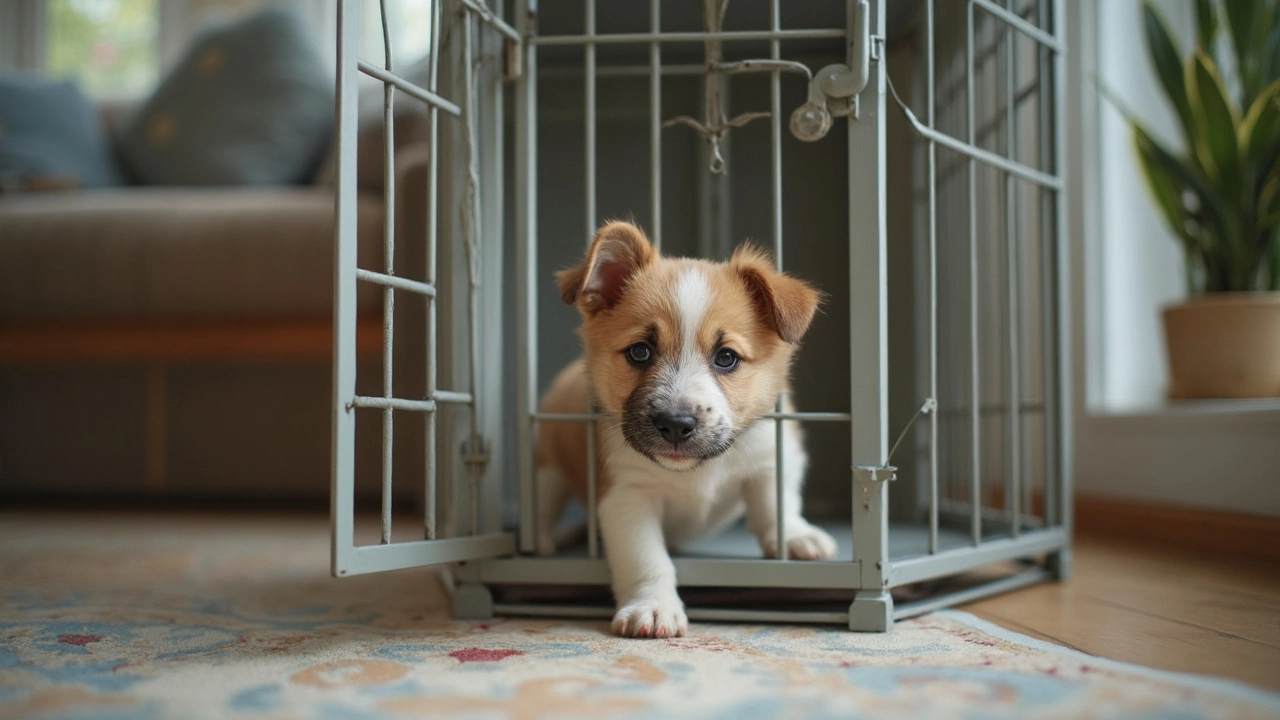
Safety Considerations
You want your puppy safe and happy when napping, and honestly, some things can go sideways if you’re not careful. The crate itself acts almost like a seatbelt—it stops your puppy from wandering off, chewing stuff they shouldn’t (phone chargers, toilet paper, you name it), or getting into scraps with other pets. Closing the door adds a level of security, especially if your house is busy or you’ve got other animals around.
The real risk comes from whatever’s inside the crate with your pup. Anything not puppy-proof can be a choking hazard or worse. No collars—they can get stuck on crate bars. Stick to safe chew toys made for dogs. If you use bedding, check for any loose threads or foam stuffing poking out. I once found Arlo trying to eat the zipper pull from his bed—turns out, those little details matter.
If you pick the puppy crate training route and shut the door, timing is everything. Puppies don’t have strong bladders. Leaving them locked in too long is the fastest way to create messes and stress. A general rule: puppies can hold it for about one hour per month of age, up to four hours. Here’s a cheat sheet I wish I’d had earlier:
| Puppy Age | Max Time in Crate (hours) |
|---|---|
| 8 weeks (2 months) | ~2 hours |
| 12 weeks (3 months) | ~3 hours |
| 16 weeks (4 months) | ~4 hours |
Last thing: the crate should always be in a spot that feels safe but not totally cut off from action. Puppies are social, so being close to you helps them relax. Don’t put crates near heaters, direct sun, or in isolated rooms—overheating is no joke. Just like you wouldn’t nap in a sauna, neither should your puppy. A small thermometer clipped near the crate gives peace of mind if your place runs hot or cold.
Tips to Help Your Puppy Love the Crate
Getting your puppy comfortable with their crate shouldn’t feel like a battle. Most pups can learn to see the crate as their own little home base if you go about it the right way. Here’s what actually works—no complicated tricks, just real-life, practical steps.
- Puppy crate training should start slow. Let your pup check out the crate at their own speed. Keep the door open at first, and toss in a treat or two so they connect the crate with good things.
- Make the crate comfy. Add a soft blanket, a favorite toy, or even an old shirt that smells like you. Something familiar helps lower their stress.
- Feed meals in the crate. This turns the crate into a happy place, not a spot for time-outs. Just leave the door open while they eat—and only start closing it for a minute or two once they seem relaxed.
- Keep crate time short and sweet in the beginning. Don’t shove your puppy in for long naps or overnight right away. Build up from 5–10 minute sessions.
- Mix up the timing. Crate isn’t just for when you’re going out. Hang out nearby, read a book, let your puppy know you’re close while they rest inside.
- Never use the crate as punishment. If your puppy thinks the crate is where you send them when you’re mad, you’re going to have a bad time.
Stats back this up: a 2022 survey from the American Pet Products Association found that 76% of new puppy owners who used positive reinforcement with crate training reported less whining at night within two weeks. Making the crate a place for rest and rewards helps most dogs settle in way faster.
| Tip | Success Rate* |
|---|---|
| Start with treats in crate | 85% |
| Feed puppy meals in crate | 80% |
| Short crate sessions | 78% |
| Never use crate for punishment | 90% |
*Based on APPA puppy owner self-reports, 2022.
I did all of this with Arlo, and he now trots into his crate for naps without needing a bribe. Keep it positive, keep it low-pressure, and your puppy will probably come to love their crate too.
What I Do With My Own Dogs
Alright, here’s how it goes in my house with Arlo (my dog) and Thistle (my cat, who thinks crates are her personal playground). I’ve dealt with the crate door question plenty—especially during those wild puppy days when Arlo was into everything but his own toys.
If Arlo’s wiped out after a long walk and I know it’s just him and me chilling at home, I’ll leave the crate door open. He likes having that freedom, and it shows me he trusts the crate as a safe spot, not some forced timeout. But let’s get real: if I’m distracted or have to head out (even just to grab a delivery), I shut the crate door. Puppies are experts at finding trouble, and closing the door keeps Arlo safe, my furniture intact, and Thistle out of his dinner.
Here’s my quick rundown for deciding what to do:
- If there’s a lot of activity, shut the door—puppies feel safer and stay out of mischief.
- When I’m nearby and the house is calm, I leave the crate door open and let Arlo choose.
- For naps at night, the door usually stays closed till house training is solid.
There’s real data backing up crate training, too. A 2023 survey from the American Veterinary Medical Association found that 71% of puppy owners use crates for safe sleeping at home. Of those, most said they start with the puppy crate training approach: shut the crate door early on and give more freedom as dogs mature.
| Puppy Age | How Often I Shut the Door | Notes |
|---|---|---|
| 8-12 weeks | Almost always | Too tempted to wander; safety first |
| 3-6 months | About 75% of naps | Gradually building trust |
| 6 months+ | Open when supervised | Door closed only if I’m out or at night |
If you’re new to this, keep it simple: when in doubt, shut the door. As your puppy gets the hang of things, you’ll figure out the sweet spot for your home. And hey, don’t be surprised if your cat tries to join nap time. It happens here every day.

